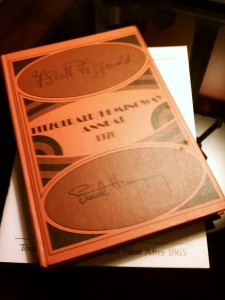Reader’s Guide kindly contributed by Kathy Gabriel. Thanks, Kathy!
Publication Details
Published in the The New Yorker, June 19, 1965, pages 32-113
Plot Summary
Buddy Glass, age 46 transcribes a letter written by his older brother Seymour at the age of seven, when both boys were attending summer camp at Camp Simon Hapworth. Seymour provides an emotional account of their time at Camp Hapworth interspersed with condescending advice to his family and rants on religion and literature in nearly 30,000 words. It was Salinger’s first and only published work after “Seymour: An Introduction.”

